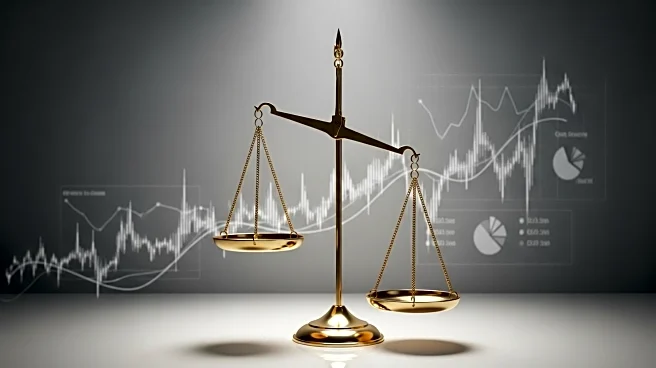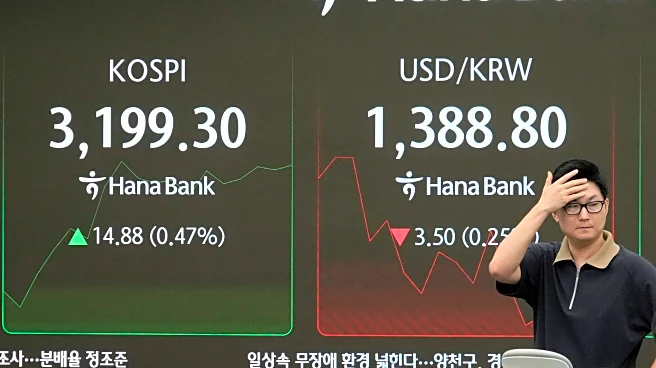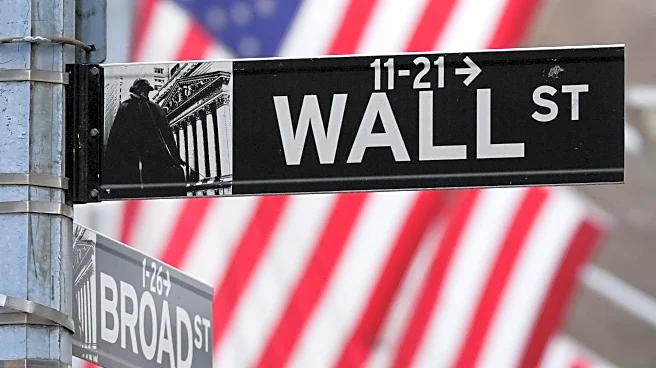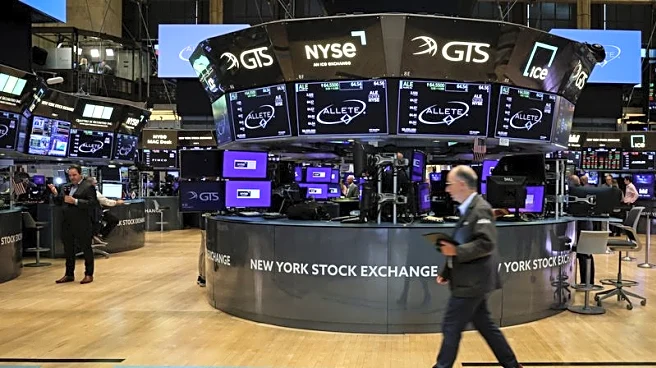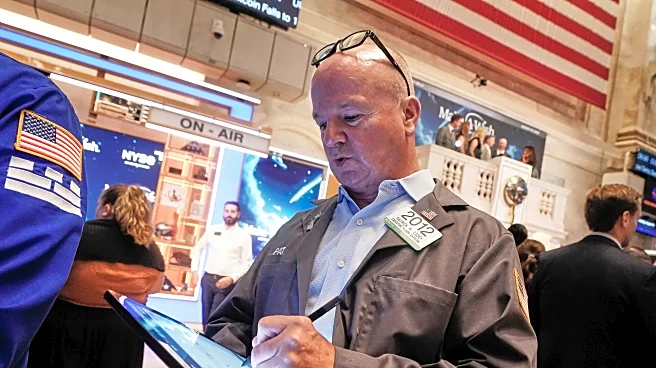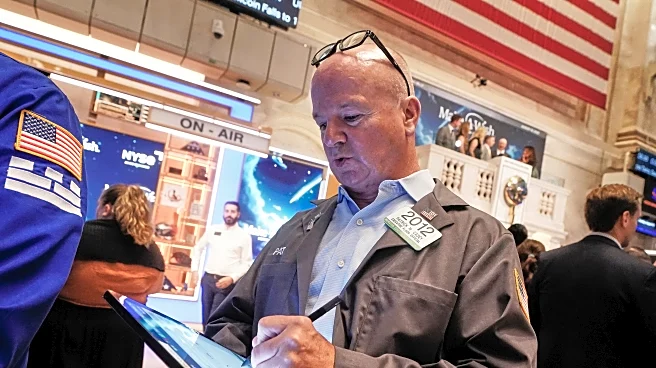What's Happening?
A federal appeals court has ruled that most of President Trump's tariffs are illegal, although the levies will remain in place until October 14. This decision has unsettled investors, leading to a significant drop in major U.S. stock indices. The S&P 500 fell by 1.06%, the Nasdaq Composite by 1.28%, and the Dow Jones Industrial Average by 0.86%. The ruling comes after the Labor Day weekend, a period traditionally marked by volatility in the stock market. The CBOE Market Volatility index reached its highest level in over four weeks, indicating increased market uncertainty. Investors are also anticipating the release of the August U.S. nonfarm payrolls report, which could further impact market dynamics.
Why It's Important?
The court's decision on the legality of President Trump's tariffs has significant implications for U.S. trade policy and economic relations. The tariffs have been a contentious issue, affecting international trade partnerships and revenue from these levies. The ruling could lead to changes in trade dynamics and impact industries reliant on imports and exports. Additionally, the market's reaction highlights investor concerns about economic stability and potential interest rate adjustments by the Federal Reserve. The anticipation of a 25-basis-point cut in interest rates reflects the market's sensitivity to economic indicators and policy decisions.
What's Next?
The Trump administration has the option to appeal the court's decision to the Supreme Court, which could prolong uncertainty in the markets. Investors will be closely monitoring upcoming economic data releases, including the nonfarm payrolls report, for further insights into the economic outlook. The Federal Reserve's meeting later this month may also influence market sentiment, depending on their decision regarding interest rates. Companies affected by the tariffs may need to reassess their strategies in light of potential changes in trade policy.
Beyond the Headlines
The ruling on tariffs raises broader questions about the balance between protectionist policies and global trade relations. It may prompt discussions on the long-term impact of such tariffs on the U.S. economy and its position in international trade. The decision could also influence future administrations' approaches to trade policy, considering the legal and economic ramifications of imposing tariffs.
